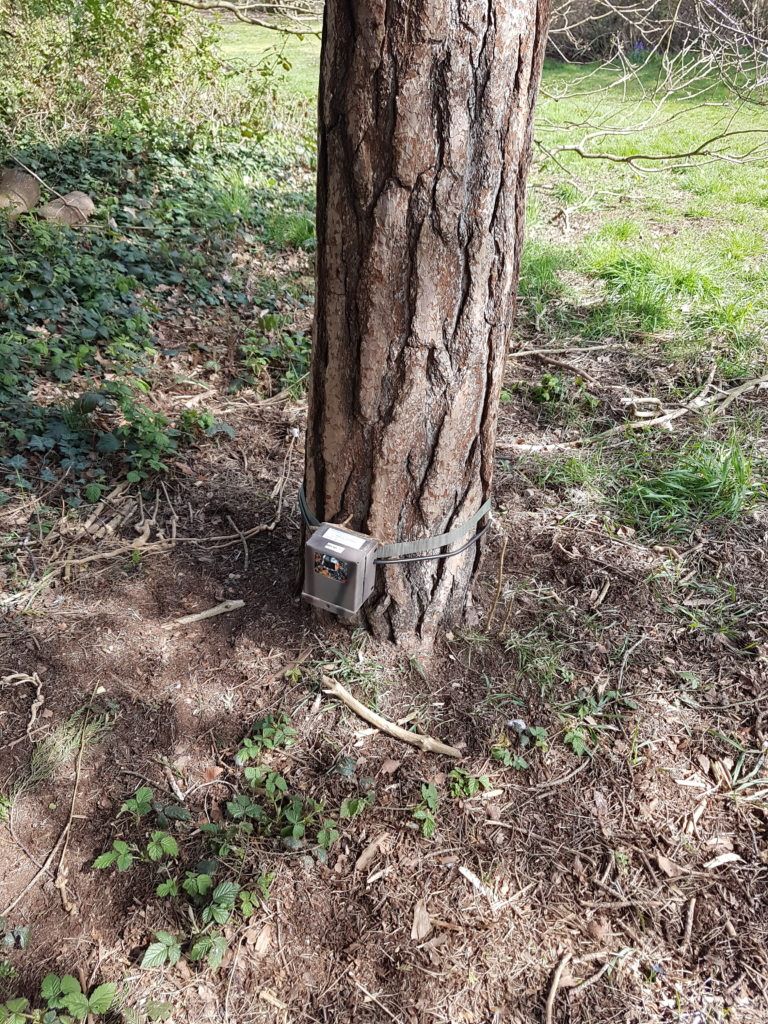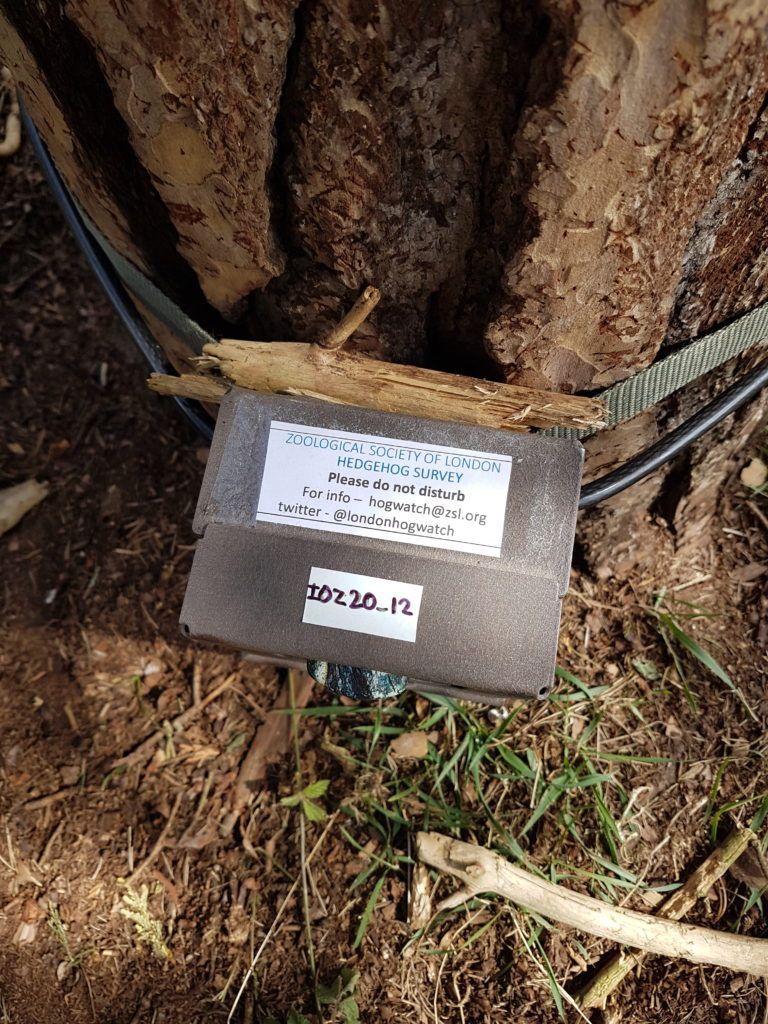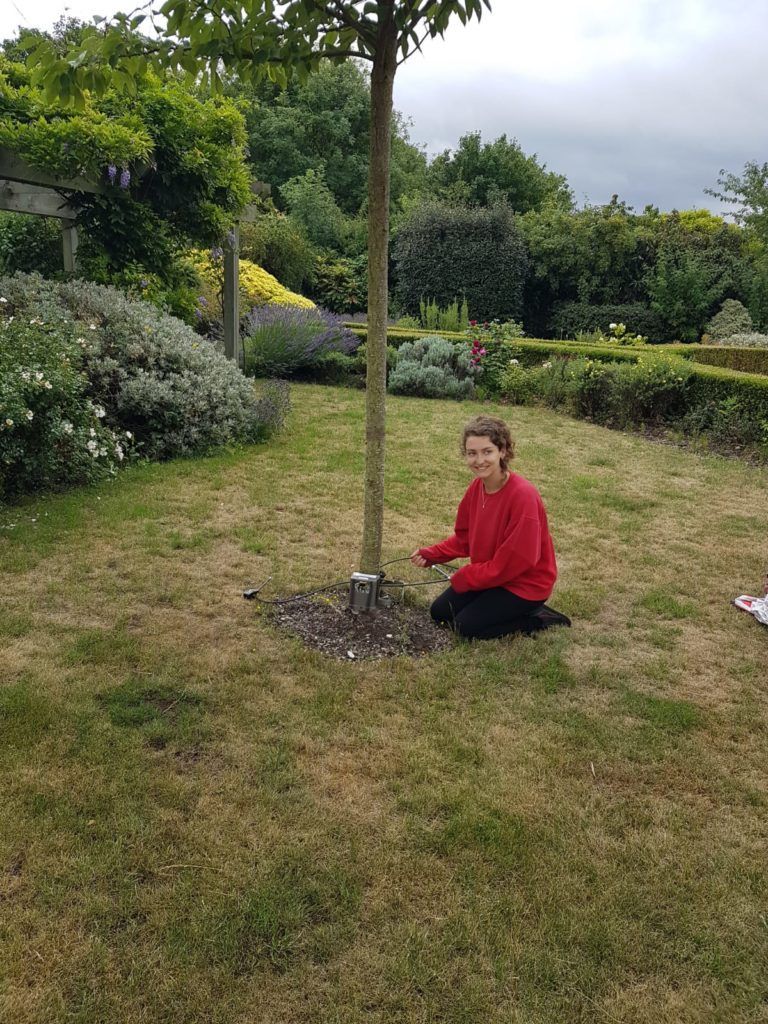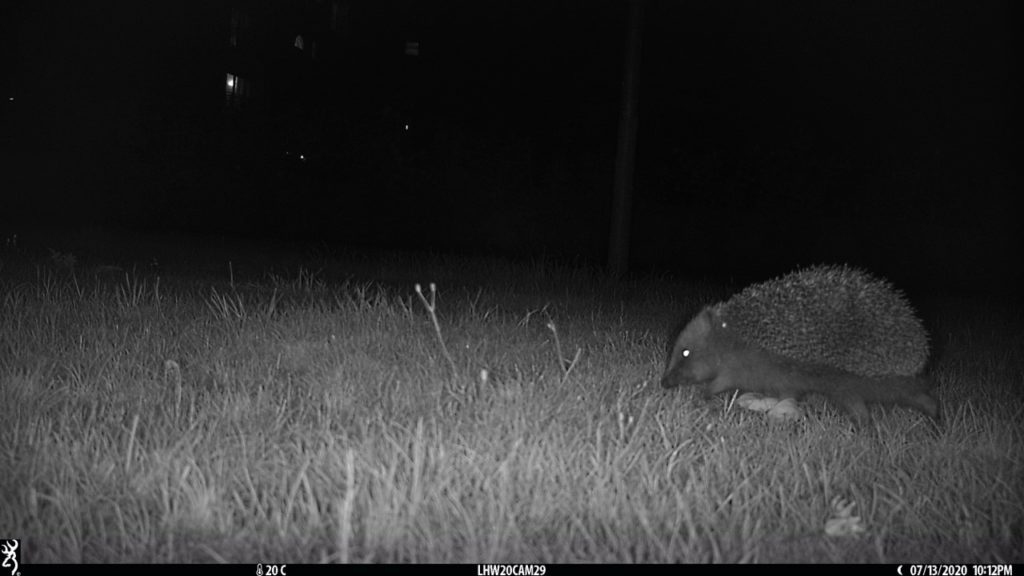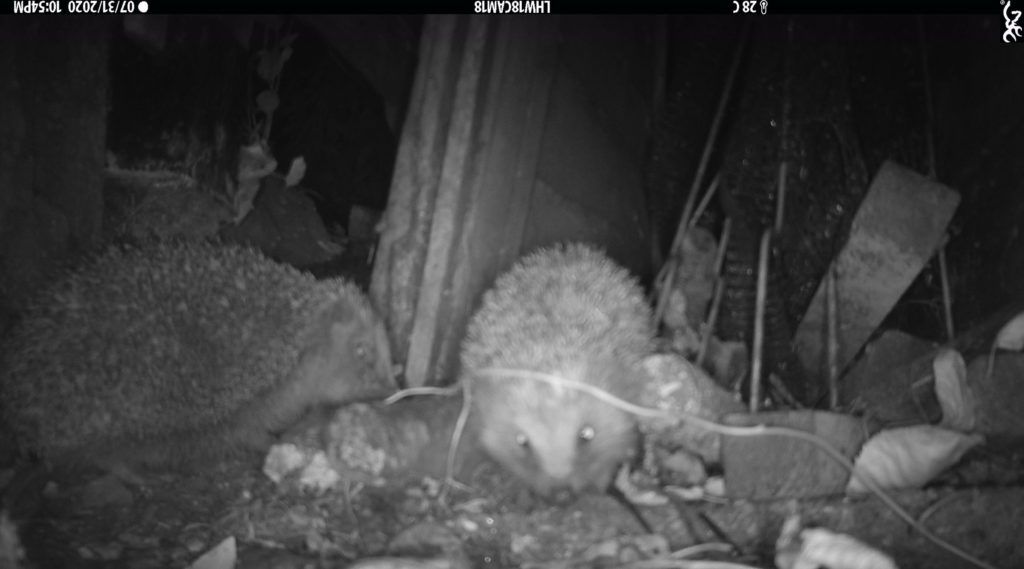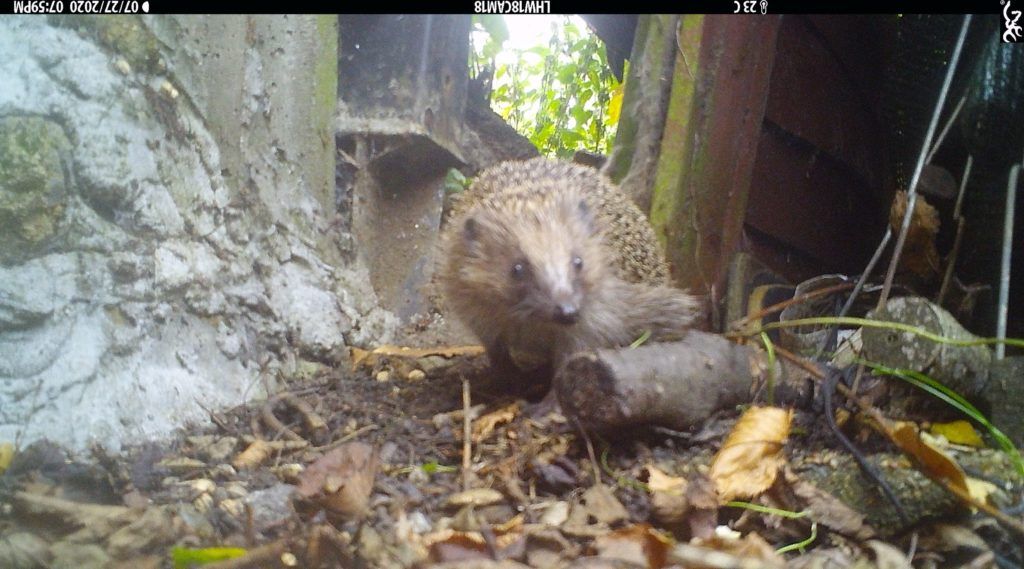Taking a closer look at south London’s hedgehogs
Hedgehog numbers have plummeted so much in the UK over the last thirty years that they’ve recently been classified as vulnerable to extinction. Working with PTES, Zoological Society of London’s (ZSL) London HogWatch project aims to help halt this decline. They are identifying which areas are important for the long-term survival of hedgehogs (i.e. where they are abundant and need help ensuring development doesn’t restrict populations), and working with local groups to support their hedgehog conservation efforts, targeting them where they are most needed.
Monitoring hedgehogs
Most of our information about hedgehogs is gathered from citizen science surveys, such as PTES’ Big Hedgehog Map. Whilst this information is extremely useful, the data can be biased towards where volunteers live, leaving big gaps in areas, such as parks, that might be locked at night, or where there are fewer people looking. But we know there are hedgehogs in some of these areas and want to learn more about them. London HogWatch uses a different approach: systematic camera trapping. Camera trapping data provides information not only about where hedgehogs are, but importantly, where they’re absent and can also give us an indication of how many there are in an area too. Usefully, camera surveys can also pick up evidence of a wide range of other animals, including species that may impact hedgehogs, like badgers and foxes.
What we already know about hedgehogs in south London
London HogWatch’s surveys throughout the capital’s green spaces have revealed some strong hedgehog populations in north London, such as Hampstead Heath. However, the outlook for hedgehogs in south London wasn’t so positive. Only two out of eleven green spaces that were surveyed had resident hedgehog populations, both of these in Barnes.
Previous camera trap surveys, funded by PTES in 2018, identified Barnes as a possible hedgehog hotspot with animals found at nearly a quarter of camera sites. When the survey was expanded in 2019, hedgehogs were only found in two of the five green spaces (Barnes Common and Barnes Wetland Centre). Due to the relatively small size of these sites, we were concerned whether they were big enough to support hedgehog populations in the long-term and didn’t know whether these populations were connected.
Learning more about south London hedgehogs
In 2020, Kate Scott-Gatty joined London HogWatch as a PTES intern. Kate’s job was to carry out more surveys, building on the previous findings in Barnes to get a clearer picture of where hedgehogs were and how they were doing. She also wanted to look at new areas and habitats in the wider area. As previous surveys had only focussed on medium to large public parks, Kate decided to survey smaller green spaces such as gardens and allotments to understand the relative importance of different habitats. During lockdown, she carried out some exploratory garden surveys by cycling around Twickenham, Sheen and Teddington in southwest London. Working in a Covid-safe manner, Kate left cameras on residents’ doorsteps for them to put up in their gardens. Working with Sutton Council she also surveyed Beddington Park and the surrounding residential gardens, a completely new area for the project, to gain a better understanding of where hedgehogs are across south London.
Good and bad news
Very encouragingly, Kate’s cameras found hedgehogs in eight out of the eleven south London survey areas. She also discovered that the populations in Barnes Common and Barnes Wetland Centre are connected and can freely move into the surrounding areas, which is really encouraging for the long-term survival of this population. However, the number of sightings was lower on Barnes Common than in previous years which is potentially worrying as it could indicate a population decline. The camera traps also revealed that badgers are affecting hedgehog distribution in southwest London and that residential gardens are acting as important refuges for hedgehogs in this area. Despite having lived alongside each other for millennia, in more recent years, increasing badger numbers is appearing to have a negative impact on hedgehogs and the two species don’t appear to co-exist in urban areas. However, badgers do appear to be more fearful of humans and much less likely to come into gardens, which suggests the importance of gardens acting as refuges for hedgehogs where the two live alongside each other.
Twickenham looks like another potential hotspot for hedgehogs in southwest London; private garden surveys showed a number of sites had hedgehogs in this area.
Gardens also played an important role in the borough of Sutton; Beddington Park had fewer hedgehog sightings than the surrounding gardens. This highlights a possible issue of connectivity since the park is surrounded by busy roads. There were relatively few sightings in general in the area which could suggest that this may be a small and vulnerable population in need of targeted conservation efforts.
Hope for the future for south London’s hedgehogs
The outlook for south London’s hedgehogs looks better than we originally thought from previous London HogWatch surveys. The survey data have enabled us to have a much clearer picture of the distribution of hedgehog populations in this region. It’s also helped identify areas for future surveys and where conservation efforts could be most effectively targeted. We’re delighted that as a result of our work, Sutton Council is creating a hedgehog action group to protect their local hedgehogs.
Kate’s expansion of the London HogWatch project into gardens was a big success and was also a very effective community engagement activity. Many participants asked for advice on how to make their gardens more hedgehog friendly. The surveys also revealed just how important gardens are as habitats, both in this area and potentially across Greater London. It highlights just how important hedgehog highways are, and how future research in both parks and gardens is needed to gain an accurate picture of how hedgehogs are using these areas and how we can manage and connect them to help London’s hedgehogs survive and flourish in the long-term.
Thank you for helping us fund this research to protect hedgehogs in the UK.
If you’d like to support work like this, please donate or set up a direct debit today.

